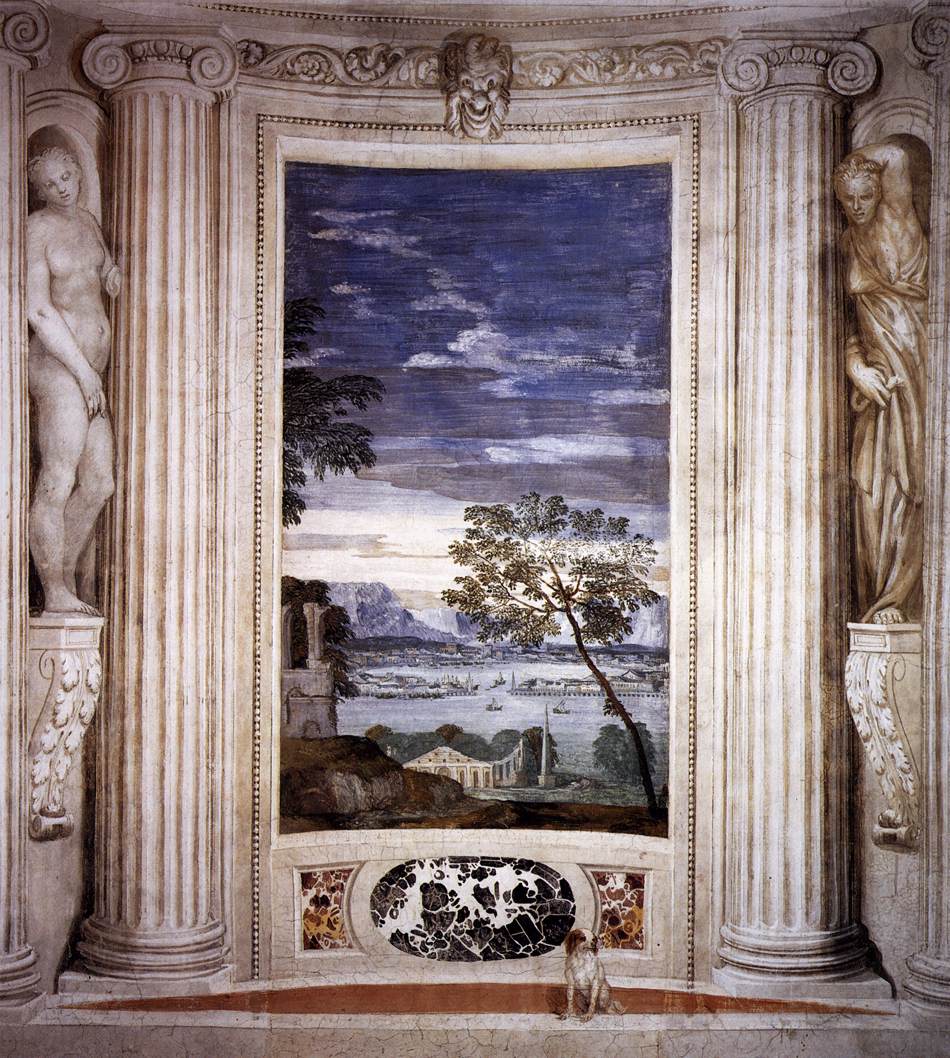With a building designed by Andrea Palladio (completed c. 1558) and immersive frescoes by Paolo Veronese (c. 1560–61), the Villa Barbaro in Maser is one of Italy’s great examples of gesamtkunstwerk, or total work of art. The home’s original owners, the brothers Daniele and Marcantonio Barbaro, were well-educated humanists whose tastes are reflected throughout the allegorical, mythological, and classical aspects of Veronese’s masterpiece. Consistent with this Renaissance spirit, the artist probably modeled several of the frescoes’ figures on his patrons, his patrons’ family (including pets), and himself.
Veronese took great pains to create the perception of three dimensions in his work at Maser, depicting naturalistic shadows that mimicked the specific effects of each room’s primary light source, architectural details that feel like logical extensions of the Villa’s Palladian architecture, and life-size figures to live within these fictional spaces. Thus instilled with a bright, startling realism, his figures refuse to blend into the walls like decorative wallpaper, and instead demand to be acknowledged by visitors as fellow actors inhabiting a shared space.
All of this begs the questions: What was it like to live, day-in and day-out, year after year, with these silent, often judging, personages? Was the strangeness compounded for the first owners, who would have seen themselves and people they knew in the unchanging figures while their real bodies altered with age? What was it like to live surrounded by allegories of both behavioral and social roles, like those illustrated in the man of Virtue restraining the woman of Passion with a horse bit? Or to have your family’s coat of arms (or that of the family you worked for) embedded in all of this imagery, as if your familial stamp literally belonged on the world around you?
Unfortunately for us (but good for the frescoes), photography is not allowed within the Villa. All images of Barbaro’s interior included here are therefore from Web Gallery of Art.
Bonus:








